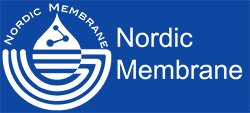Membrane is a semi-permeable barrier that controls the transport of substances between two adjacent phases. Due to its intrinsic properties, membranes are playing an important role in the separation science and new engineering approach toward industry. The first generation of polymeric membranes are Microfiltration, Ultrafiltration, Nanofiltration, and Reverse Osmosis. During the past years membrane application expanded from above mentioned separation technologies to wider spectrum like chemical transformations (membrane reactors, catalytic membranes, membrane bioreactors, etc.), and mass and energy transfer between different phases (membrane contactor, membrane distillation, membrane crystallizer, membrane emulsifiers, membrane strippers, membrane scrubbers, etc.)
Polymeric membranes are playing an important role in gas separation applications. First gas separation plant established in 1980 by using polysulfone hollow fiber membranes for separating Hydrogen from Nitrogen. Gas separation membranes can be used in pre-combustion, post-combustion or oxyfuel combustion. Upgrading biogas, separation of O2/H2, CO2/H2, O2/N2, CO2/N2, etc. are some of the examples of membrane applications in the gas separation arena.

Membranes are key component of green and blue energy production such as fuel cell, reverse electrodialysis, pressure retarded osmosis, etc. In addition, membranes performance has a direct effect on several energy storage systems such as secondary batteries (i.e. flow batteries, Li-ion battery, etc.)




